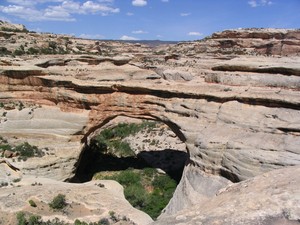Things for Unit 5 you should UNDERSTAND, KNOW, and be able to DO...
Understand:
- The atmosphere and the lithosphere interact with each other through the water cycle (hydrosphere).
- The sun’s energy powers the water cycle which contributes to the weathering of rocks.
Know:
- Weathering is the physical and chemical breakdown of rocks at or near the Earth’s surface.
- Physical weathering changes the size and appearance of rocks without changing the chemical composition. Frost action, abrasion, and root wedging (plant action) are agents of physical weathering. Physical weathering commonly occurs in cold and wet climates.
- Chemical weathering changes the chemical composition of rock. Acid rain and oxidation are agents of chemical weathering. Chemical weathering commonly occurs in warm and wet climate.
- The rate of weathering is influenced by surface area (particle size), climate, and composition.
- The larger the surface area, the greater the rate of weathering.
- As temperature and moisture increases, the rate of chemical weathering increases.
- Minerals combine with water and react with acid (calcite and dolomite) and oxygen (iron bearing minerals).
- The hardness of minerals effects the rate of weathering - harder minerals (quartz) tend to weather slower than softer (calcite) minerals.
- Soils are the result of weathering and biological activity over long periods of time.
- Soils consist of water, air, minerals, and organic matter. Soils can be divided up into layers (horizons) with distinct characteristics.
- Organic material or humus is found in the top layer (“A” horizon).
- Water Cycle - Water is returned from the atmosphere to Earth’s surface by precipitation. Water returns to the atmosphere by evaporation or transpiration from plants. A portion of the precipitation becomes runoff over the land or infiltrates into the ground to become stored in the soil or groundwater below the water table. Soil capillarity influences these processes (the smaller the particle size, the greater the capillary action).
- As temperature increases, evaporation and transpiration (evapotranspiration) increase.
- The amount of precipitation that seeps into the ground (infiltration) or runs off is influenced by climate, slope of the land, soil, rock type, vegetation, land use, and degree of saturation.
- Infiltration is greatest when the land is horizontal, highly permeable (larger spaces between the soil particles), and is unsaturated.
- Porosity, permeability, and water retention affect runoff and infiltration.
- Sorted particles have a greater porosity.
- Particle size does not affect porosity.
- The larger the particle size, the greater the permeability.
Vocab Terms: Abrasion, acid rain, arid, capillarity, chemical weathering, clay, condensation, evaporation, evapotranspiration, frost action, groundwater, humid, infiltration, parent material/bedrock, permeability, physical weathering, porosity, precipitation, root wedging (plant action), runoff, sand, sediment, silt, transpiration, (un)saturated zones, water cycle, water table, wells
Extended Vocabulary: humus, hydrolysis, organic layer, oxidation, residual soil, root wedging, soil profile, transported soil
Do:
- Compare and contrast physical and chemical weathering
- Describe the relationships of climate and weathering variables
- Use a model to predict the permeability of sediment of various sizes
- Predict and analyze the physical changes in rock as a result of abrasion
- Calculate the rate of change of weathering
- Identify the various stages of the water cycle using a diagram


